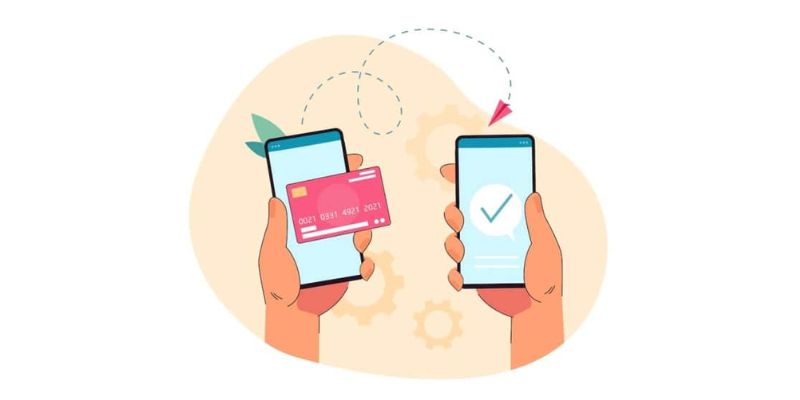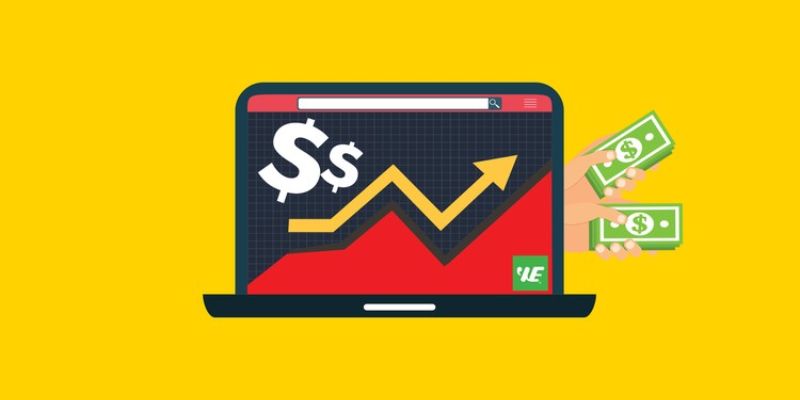Imagine a wallet that never leaves your side, one that holds not just cash but your very identity. That’s your mobile wallet, and I’m here to show you the Best practices for secure mobile wallets. This isn’t about just slapping on a password; it’s a full-blown armor for your digital cash in this cyber age. You’ll get the inside scoop on encryption essentials, dodge common risks, and even outsmart clever fraudsters. Ready to turn your mobile wallet into a fortress? Let’s lock this down together!
Understanding Mobile Wallet Security Measures and Risks
The Essentials of Mobile Wallet Encryption
Let’s talk about keeping your cash safe in your mobile wallet. You know, that handy app that lets you pay with your phone? We need to make sure no one can sneak in and steal from it. That’s where encryption comes in. It’s like a secret code for your money info. But it’s a code that’s tough to crack. Every time you pay, this code keeps your details hidden. So, what’s in charge of this? Well, here’s the techy bit: we use something called Secure Sockets Layer, or SSL for short. And guess what? It’s the same stuff used in websites when you see that little padlock in your browser. We wrap up your payment info in layers of this SSL encryption. Just like you’d wrap up warm for the snow. This keeps your money talk to just between you and the shop, safe and sound.
Identifying Common Mobile Wallet Risks
Think your mobile wallet is always safe? Think again. There are risks out there. What kind, you ask? Let’s start with the main ones: the bad software that creeps onto your phone called malware, and those sneaky scam emails or texts that try to trick you. They want your wallet login or to get you to tap on links that aren’t good news. You might be wondering, how do I spot these risks? Well, if an app asks for too many permissions, that’s a red flag. And those emails or texts that don’t look right? They’re likely phishing – and no, not the kind with fish and water. We’re talking about the kind that fishes for your info. But don’t panic. You can dodge these risks by being sharp. Only download apps from stores that are the real deal, not some shady place on the net. And those messages that look off? Just delete them. Keep these tips in the back of your mind, and you’ve already upped your mobile wallet safety game.

Advanced Security Features for Protecting Smartphone Payments
The Role of Two-Factor and Multi-Factor Authentication
Picture this: Your smartphone is like a vault where your digital money sleeps. Now, think of two-factor and multi-factor authentication (2FA and MFA) as the advanced locks that only let you in. They check if it’s really you trying to access your funds. Imagine someone gets your password. With 2FA or MFA, they’d still need another key to get in, like a fingerprint or a text code. That’s how these tools add that extra layer of safety. They work as a team with your password to guard your mobile wallet.
The Importance of Biometric Security in Digital Wallets
Now, let’s talk about biometrics. This is about using your body’s unique features, like your fingerprint or face, to secure your digital wallet. It’s like your wallet knows you, the way your dog knows you’re the one holding the treat. Most times, your thumbprint or a look at your phone is all it takes to open your wallet. It’s super personal, and it’s tough for bad folks to copy. That means your cash and cards inside your smartphone stay put, just like they should.
With these features, think of your mobile wallet as a safe house for your money. It’s all about keeping what’s yours, truly yours.
Safe Practices for Mobile Payment and Wallet Management
Crafting Strong Passphrases for Mobile Wallets
Got a mobile wallet? Great! You can buy stuff with a tap. But wait, is it safe? You bet, with a strong passphrase. I’m here to tell you how to make one. Think of it like your wallet’s superhero shield.
First off, what’s a passphrase? It’s like a password but longer. Why long? Because more letters, numbers, and symbols make it tough for bad guys to guess. Now, how do you make a good one? Easy!
Start with a sentence you can remember. Maybe “My dog leaps over 3 pink fences!” Now, let’s spice it up. Mix special characters, swap letters with numbers, or use an acronym. Bam! “Mdlo3pF!” can work. It’s short, yet strong.
But don’t stop there. Add more layers. Think of something only you know. Maybe a secret spot you love. Let’s say it’s “Hilltop.” Blend it with your first passphrase. How about “H1llt0pMdlo3pF!”? That’s solid gold.
Change your passphrase often. Maybe every 3 months. Mark it on your calendar so you don’t forget. Old stuff is easy pickings. New is always better.
And please, keep it to yourself. Sharing isn’t caring here. It’s like giving away keys to your car. No good.
To sum it up, strong passphrases are huge for keeping cash safe in mobile wallets. It’s simple to do and worth every minute. So take a quick moment, craft that awesome passphrase, and shop with peace of mind.

Best Approaches for Secure Contactless Payments
Now, let’s talk taps and beeps. That’s contactless payments. They’re fast and cool. But are they safe? With the right moves, they sure are.
Here’s a tip: use NFC. That stands for Near Field Communication. It’s tech that lets devices talk when they’re close. And it’s good. Why? Because it works quick and keeps data under wraps.
For this magic to work, you need a secure mobile app. There are plenty out there. Find one that talks about safety a lot. That’s a good sign.
Next, turn on your phone’s lock screen. Use a PIN, pattern, or fingerprint. It adds a barrier. Like a gate that only lets you through.
Now, two-factor authentication, or 2FA, is your friend. What’s that? It’s a double-check system. You log in, and the app sends a code to your phone or email. Only you get that code. Enter it, and you’re in. No code, no entry. Simple, right?
Another smart thing to do: watch your statements. See weird charges? Call your bank fast. Better safe than sorry.
Lastly, don’t let your phone nap unlocked in public. It’s an open invite for trouble. Keep it close and keep it locked.
Secure contactless pays are all about good habits. Use smart tech, stay alert, and your cash stays yours. Stick to these tips, tap away, and enjoy that easy, breezy checkout life.
Combating Fraud and Ensuring Safe Mobile Transactions
Strategies for Digital Wallet Fraud Prevention
To keep your mobile wallet safe, you need the right tools and habits. Mobile wallet security measures are like a strong lock on your door. You should always go for mobile wallets that boast high-end encryption. This guards your sensitive info from sneaky thieves.
“Encrypt” might sound complex, but it’s simple. It scrambles your data so that only you and the intended receiver can read it. Think of encryption as a superhero for your digital cash. To beef up security, also turn on two-factor authentication for your mobile wallet. It’s like a double door for your data; even if someone knows your password, they can’t get in without the second key.
These protections mean a lot in the tech world. A secure digital wallet must also be user-friendly. It helps you know it’s working to protect you. That’s why mobile payment safety is my top priority when I choose a wallet app.
Now, mobile wallets come with built-in safety nets, called tokenization. When you buy something, the seller never sees your card info. Instead, they get a one-time code. If hackers strike, they get a useless code, not your card number. Smart, right?
Of course, even with strong defenses, bad guys could still try to trick you. Often, they fake alerts from banks or shops. So, be smart. Don’t trust links in texts or emails. Go straight to the app or official site yourself. That way, you dodge those phishing scams and keep your cash safe and sound.

Understanding and Avoiding Mobile Wallet Phishing Scams
Phishing scams are big trouble. Hackers love to use them to steal our hard-earned money. They send fake messages that look real. They pretend to be your bank or a shop you like. Their goal? To trick you into handing over passwords or card numbers. To stay safe, remember these words: “If in doubt, check it out.” Not sure if a message is legit? Reach out to the bank or shop using numbers or sites you trust. Never use the links or numbers the message gives you.
Here’s the deal with avoiding mobile wallet phishing scams. These crooks are cunning. They can copy logos and use the right colors to look legit. The messages they send can make us worried or excited. They say things like “Alert!” or “You won a prize!” But remember, rushing can lead to mistakes. So, slow down. Look at messages with a careful eye. Don’t click on links or share your codes, pins, or passwords. By taking these steps, you’re like a goalie, blocking scams from scoring a goal on you.
Your mobile money needs to stay secure. Think of your phone as a pocket-sized bank. Would you leave your bank unlocked? Nope. So, keep your mobile wallet just as tight. Always log out when you’re done. Update your phone and apps to fix any weak spots that hackers could hit. Treat your wallet app like you would cash: with lots of care.
Remember, good habits make your mobile wallet tough to crack. Keep these tips in hand, and you’ll be a mobile payment pro, keeping your cash safe in the cyber world.
So let’s wrap this up. We dived deep into keeping your mobile wallet safe. We covered how encryption keeps your cash safe and the risks of mobile payments. Then we checked out cool security stuff like two-step checks and finger scans. We even talked about how to make strong passphrases and smart ways to tap and pay.
Here’s my final say: staying safe with mobile payments isn’t hard. Just be smart, use the right tools, and never share your secrets. Think about the stuff we talked about today, and you’ll be way ahead in keeping your mobile money safe. Stay sharp, stay secure, and you’re good to go.
Q&A :
What are the essential security measures for mobile wallets?
To maintain the highest level of security for mobile wallet use, it’s essential to take multiple measures. Strong, unique passwords combined with biometric authentication like fingerprints or facial recognition can offer robust access control. Always update your mobile wallet app and the operating system of your device to patch security vulnerabilities. Regular monitoring of transaction history is vital to spot any unauthorized activity early on. Additionally, enabling remote wipe capabilities can protect your data in case your device is lost or stolen.
How can I protect my mobile wallet from cyber threats?
Cyber threats can be mitigated through several best practices for mobile wallet protection. Firstly, ensure that you download wallet apps from trusted sources only to avoid malicious software. Utilize all available security features provided by the wallet application, such as two-factor authentication (2FA). Never share your personal PIN or passwords and be wary of phishing attacks. Use a secure Wi-Fi connection, preferably a VPN when accessing your mobile wallet in public areas to keep your data encrypted.
What are the best practices for secure mobile wallet transactions?
To ensure the security of mobile wallet transactions, priority should be given to using secure and private networks, avoiding public Wi-Fi for financial operations. Opt-in for transaction notifications to keep track of real-time spending and report any discrepancies immediately. Limit the amount of funds stored in your mobile wallet to minimize potential losses and consider using a dedicated payment card with set limits for online purchases. Additionally, never click on unknown links or provide sensitive information in response to unsolicited requests.
Can two-factor authentication enhance mobile wallet security?
Two-factor authentication (2FA) adds an extra layer of protection for mobile wallets, significantly enhancing security. By requiring a second form of verification, such as a text code or a biometric identifier, 2FA ensures that even if your password is compromised, access to your wallet remains restricted. All mobile wallet users are highly encouraged to activate 2FA if offered by their wallet service provider.
What should I do if my mobile wallet is compromised?
In the unfortunate event that your mobile wallet is compromised, immediate action can help minimize losses. First, contact your service provider to report the breach and seek assistance. They may temporarily freeze your account or help reverse unauthorized transactions. Change your access credentials and review the security settings of your wallet app. Inform your bank and credit card companies linked to the mobile wallet to watch for suspicious activities. Lastly, check your device for any malware and consider seeking professional advice or reporting to authorities if necessary.

